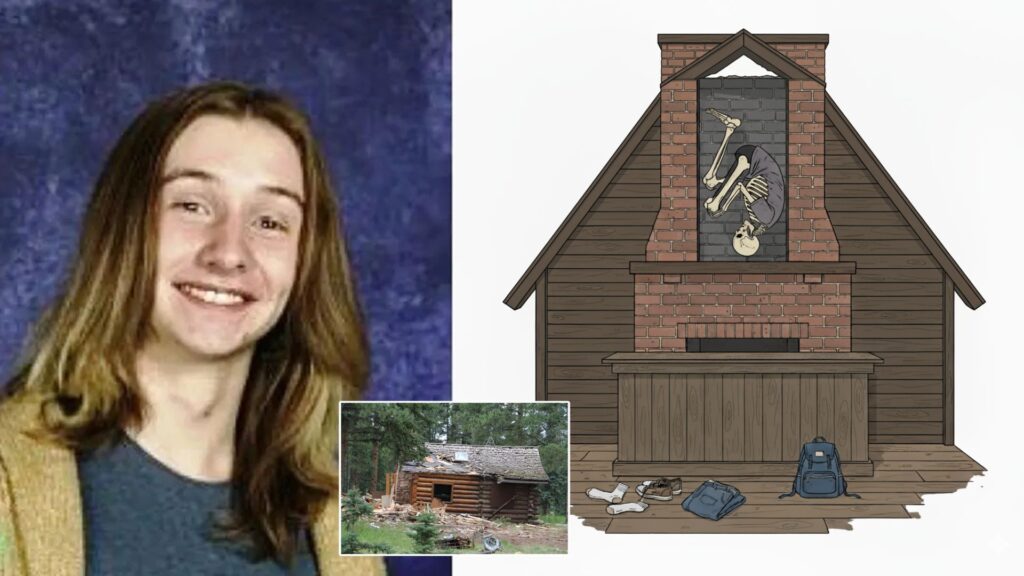
In May 2008, 18-year-old Joshua “Josh” Maddux told his sister he was going for a walk. He left his Woodland Park, Colorado home and did not return. For seven years his family searched, filed reports, and waited for answers. No leads explained where Josh had gone.
In August 2015, a demolition crew tearing down a cabin two blocks from the Maddux home found a body in the chimney. Dental records confirmed it was Josh. The discovery ended the search, but investigators could not clearly explain how or why he ended up inside the chimney.
When did Joshua Maddux disappear from Woodland Park and become known as the boy in the chimney?
Josh Maddux was remembered as a creative, kind, and outdoorsy teenager. At six feet tall, he carried a gentle presence. He played guitar, wrote music, and was known for his independent spirit. On May 8, 2008, Josh told his sister Kate he was heading out for a walk.
He left the family home on Eastridge Drive in Woodland Park, a small mountain town at the edge of Pike National Forest. Solo walks in the woods were common for him, a way to clear his mind. This time, however, he never came back, and his family began to worry.
At first, they were not alarmed. Josh often loved adventure and solitude, and it seemed possible he had extended his walk. By nightfall, concern grew. His father, Mike Maddux, called Josh’s friends, but no one had seen him. Five days later, on May 13, he filed a missing report.
Police found no evidence of foul play. There were no signs of a struggle, no immediate leads, and nothing to suggest he had enemies. Because Josh had just turned eighteen, investigators considered that he may have left on his own to start a new life. His family still held cautious hope.
One of Josh’s sisters even expressed hope that he had simply left town to pursue music or discover himself, imagining he might someday return with a family. But as weeks stretched into months with no word, that optimism faded, and the family was left with uncertainty about what had happened.
Friends, relatives, and authorities scoured the surrounding area for any trace of Josh. Woodland Park was ringed with forest, trails, and old mining sites, offering endless places to search. Despite extensive efforts, nothing was found. Mike Maddux also checked homeless shelters and campgrounds in nearby Colorado Springs, without results.
Every time unidentified remains were reported in Colorado, the family braced themselves, fearing news of Josh. “For years there’s tears and prayers and hoping…wondering and waiting,” Mike explained, describing the torment of not knowing. He struggled to stay strong for his daughters while privately fearing the worst outcome.
Two years earlier, Josh’s older brother Zachary had died by suicide at eighteen, a loss that devastated the family. Now another child was missing, and the weight was almost unbearable. “You just play a waiting game. You have an empty chair at the table and an empty place in your heart,” Mike admitted.
Without any evidence of harm, police had little to pursue. Investigators found nothing to indicate an abduction or foul play. Leads went nowhere, and Josh’s disappearance stalled without progress. For the Maddux family, it meant years of waiting, left without closure or clear answers about what had happened.
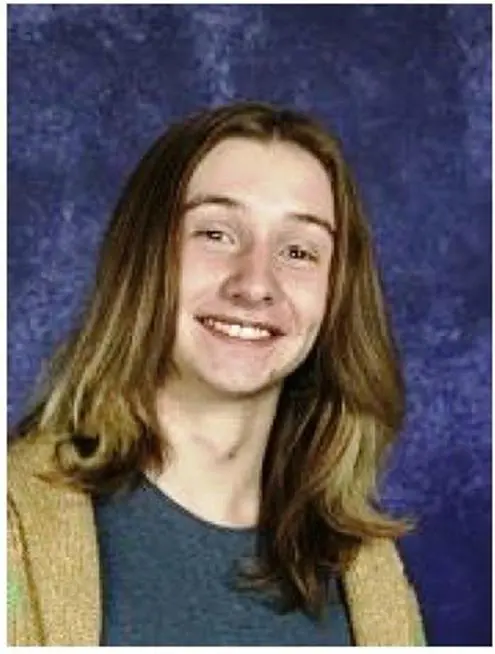
How did workers find Joshua Maddux’s remains in Woodland Park?
On August 7, 2015, seven years after Josh vanished, the quiet mystery turned into horror. Less than a mile from the Maddux home, builder Chuck Murphy was tearing down an old cabin he owned on Meadowlark Lane. The cabin had stood abandoned for almost a decade, slowly rotting away.
The structure once had history. It had been part of Thunderhead Ranch, a Prohibition-era gambling and dance hall. By 2015, it was nothing but decaying timber. Inside, rooms were damp, filled with trash and animal droppings. The cabin stood in quiet ruin, a place long forgotten and unused.
Murphy’s crew began demolition, working methodically to strip the structure for salvage. As an excavator dug into the brick chimney, a foul odor that had persisted suddenly worsened. Within moments, workers uncovered a horrifying sight: a human body wedged inside the chimney shaft, contorted and cramped unnaturally.
The figure was jammed headfirst in a fetal position, legs bent above the head, just above the fireplace hearth. Shocked, the crew froze. Murphy looked closer and saw what seemed to be a mummified body, preserved by the chimney’s conditions. He immediately called the police to report the discovery.
Investigators carefully removed the remains, which showed signs of years-long decay. The lower half was skeletal, but parts remained intact. Strangely, the body was nearly naked, dressed only in a thin ribbed thermal shirt. Jeans, underwear, socks, and shoes were later found folded neatly by the fireplace, outside the chimney.
It appeared as if the young man had removed his clothing before entering. Using dental records, authorities confirmed the remains were Joshua Maddux. The quiet Woodland Park community was stunned. For years they believed Josh had left town, but he had been just minutes away, hidden inside that chimney.
Josh’s sister Kate spoke about the shock of the discovery. “We were really expecting him to be anywhere else in the world… and he was actually very close.” The revelation provided the family with answers, but it also raised disturbing new questions about how Josh had ended up there.
The cabin’s location made the find more haunting. It sat only two blocks from the Maddux home, on a secluded lot surrounded by trees and set fifty feet from the road. Searchers had passed in 2008, but with no visible activity, they had no reason to check inside.
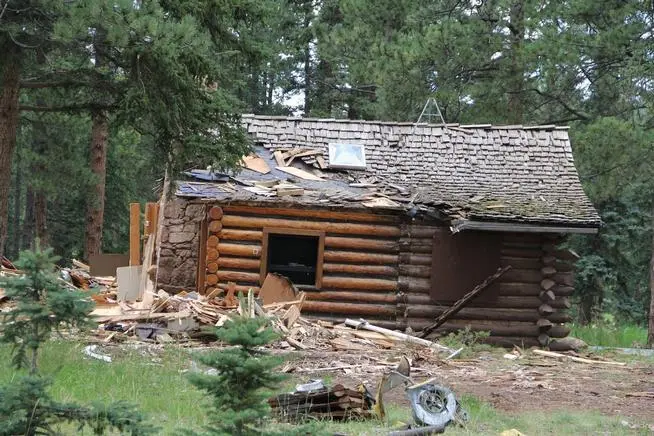
Inside, the chimney was concealed by a large wooden breakfast bar pulled from the wall and propped against the fireplace. It acted like a barricade, hiding the flue opening from view. As Murphy later said, “there was no reason to look in the fireplace” during those earlier searches.
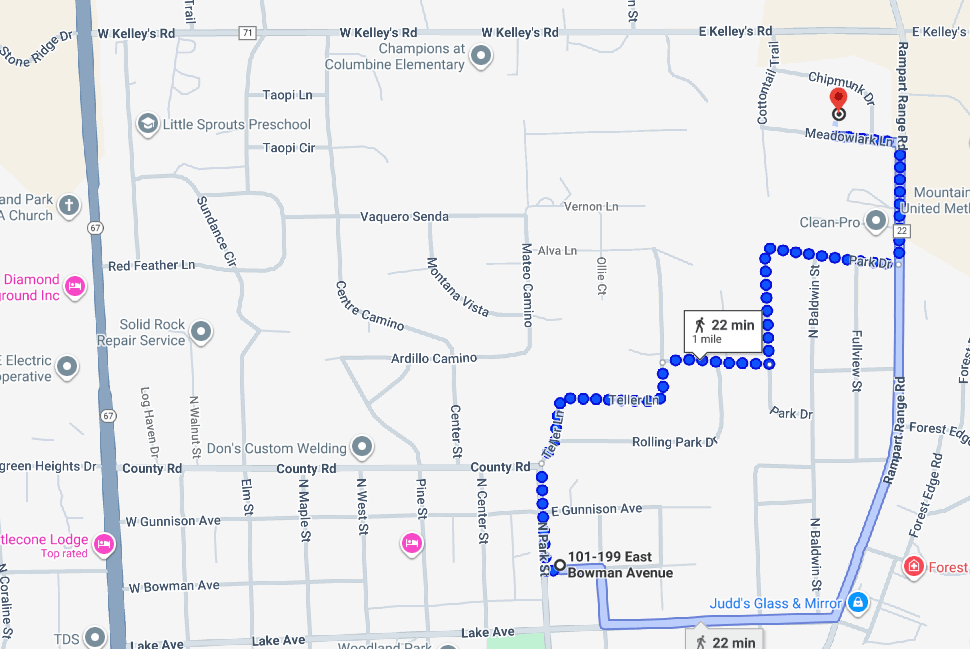
What did the Joshua Maddux autopsy reveal about his death?
Teller County Coroner Al Born arrived at the cabin in 2015 and was as puzzled as everyone else. He oversaw a detailed autopsy, but the heavy decomposition limited results. Toxicology testing for drugs or poisons was inconclusive, though no traces of common substances were detected in the remains.
The forensic exam found no evidence of violent trauma. There were no fractures, cracked skull, bullet holes, or stab wounds. “The hard tissue showed no signs of any trauma. There were no broken bones… no knife marks. There were no bullet holes,” Born later reported.
With no injuries suggesting foul play, Born turned to environmental causes. Could Josh have starved in the chimney? He dismissed this, explaining starvation would take weeks. Instead, he believed Josh likely died of dehydration or hypothermia, trapped and unable to escape once lodged inside the chimney shaft.
Temperatures in Woodland Park had dropped below freezing in early May 2008. Head-down, barely clothed, Josh could have succumbed to cold exposure within hours. If not hypothermia, lack of water would have killed him in a few days. The autopsy could not pinpoint which came first, but both were plausible.
On September 28, 2015, Born announced his ruling. He concluded Joshua Maddux died by accident. In his reconstruction, Josh climbed onto the cabin roof and attempted to slide down the chimney, perhaps as a prank or to gain entry. Instead, he became stuck head-first in the narrow flue.
Born emphasized there was “no evidence of anyone else” involved and no injuries pointing to assault. Officially, the case was deemed a tragic misadventure. He estimated Josh died within a day or two of his disappearance in May 2008, most likely from hypothermia. The official record listed accidental death.
When presenting his findings, Born admitted unresolved gaps. “There are going to be some questions out there that are unanswerable,” he acknowledged. Even he remained unsettled by aspects of the case. Yet with no evidence of foul play, authorities leaned toward closure, however unsatisfying the explanation sounded to many.
For the Maddux family, the coroner’s decision offered both finality and frustration. Mike Maddux described the seven years of limbo as “grieving on hold.” At least now, he said, they could lay Josh to rest. In October 2015, Joshua was buried, the search ended, though the mystery remained.
How did Joshua Maddux’s position in the chimney raise questions?
From the moment Joshua Maddux’s body was found, something felt wrong. The idea of an athletic, intelligent teenager voluntarily climbing headfirst into a chimney without pants or shoes seemed implausible. As facts emerged, locals and amateur sleuths questioned the coroner’s conclusion. Even Chuck Murphy and Josh’s family found it hard to accept.
One glaring issue was the chimney itself. Years earlier, Murphy had installed a heavy wire mesh grate at the top to keep animals out. “There’s no way that guy crawled inside that chimney with that steel webbing,” he said, rejecting the possibility that Josh entered from above.
Investigators did not find any grate during demolition. Coroner Al Born suggested it may have rusted away. Murphy disagreed, explaining he used galvanized steel that would not corrode so quickly. He believed it was removed along with other metal scrap during demolition, leaving the official record without photographic proof of the barrier.
If the grate had been intact, Josh could not have slid in from the roof. That scenario would require either someone removing and later replacing the mesh, or Josh being placed inside the chimney from the cabin interior. The missing grate created a hole in the coroner’s accidental-death explanation.
Inside the cabin, investigators uncovered another oddity. The fireplace was blocked by a large wooden breakfast bar that had been ripped from the kitchen wall. It had been dragged and propped against the hearth, essentially sealing the fireplace opening. Murphy’s demolition crew had to move this makeshift barricade to access the chimney.
The presence of that blockade raised troubling questions. If Josh had somehow entered the chimney from the cabin floor and climbed upward, he could not have moved the bar behind him. If he entered from above, the bar would have blocked his exit. It suggested another person sealed the opening deliberately.
Investigators also found Josh’s belongings inside the cabin, folded neatly near the fireplace. His jeans and underwear were removed and stacked, with shoes and socks placed beside them. He was found wearing only a thin thermal shirt. The scene was difficult to reconcile with an accidental entry into a chimney.
Some speculated about paradoxical undressing, a phenomenon in hypothermia cases where victims remove clothing while disoriented. But Josh would not likely have stripped before climbing down. Another idea was that he removed bulky clothing to reduce friction while squeezing through a tight gap. Yet the careful folding suggested calm intent.
This detail hinted that Josh may have removed his clothes inside the cabin, possibly intending to climb up the chimney rather than down. Perhaps he was retrieving something or trying to escape. No theory aligns perfectly, and the folded clothing remains one of the most puzzling details of the case.
The body’s position added further doubts. Josh was wedged head-down in a fetal posture, knees drawn above his head. Coroner Born himself once remarked it might have taken two people to position him that way. He called the idea of Josh voluntarily contorting himself into that position “not linear thinking.”
Normally, a person sliding down headfirst would be found straight, feet kicking upward. Josh was lodged sideways, tucked tightly. Some suggested decomposition or demolition could have shifted the body. Others believed Josh may have been unconscious or dead before placement, which would explain the unnatural posture inside the narrow flue.
These contradictions fueled skepticism. Officially, Josh’s cause of death was listed as accidental, likely hypothermia or dehydration. Yet the wire mesh, the barricaded hearth, the folded clothing, and the contorted body all challenged that narrative. “He didn’t come down the chimney,” Murphy insisted, convinced Joshua Maddux had been forced into it.
Who was Andrew Newman and why did police consider him in Josh Maddux’s case?
If Joshua Maddux did not enter that chimney on his own, the next question becomes who might have placed him there. Over the years, a few names have circulated, but one stands out repeatedly: Andrew Richard “Andy” Newman, a Woodland Park teen a few years older than Joshua.
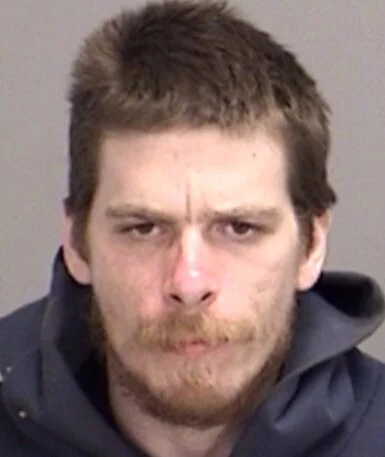
Josh and Andy were not close friends, but they shared mutual circles. Andy played guitar and sometimes jammed with other teens, including Josh. According to friends, Andy was among the last people seen with Joshua before he vanished in May 2008. At the time, this detail raised no concern.
In 2009, a year after Joshua went missing, Andy was implicated in a crime in New Mexico. A disabled man was found stabbed to death, and Andy was connected to the scene. He later allegedly confessed to killing a woman and hiding her body in a barrel, though charges collapsed.
The legal process against Andy Newman fell apart because of missing evidence and unreliable witnesses. While he walked free, his reputation grew darker. Rumors spread back in Colorado that he bragged at parties about putting “Josh in a hole,” which many later connected to Joshua’s body being found in the chimney.
After the discovery of Joshua’s remains in 2015, multiple people told police Andy Newman had confessed, directly or indirectly, to involvement. They pointed to the timing of Josh’s disappearance, Andy’s subsequent violent behavior, and his habit of making incriminating remarks. Despite this, police never named him publicly as a suspect.
Coroner Al Born confirmed that investigators received calls linking Newman to Joshua’s death. By that point, Andy was drifting through different states, facing his own legal problems, making it difficult to establish his whereabouts in 2008. No DNA or physical evidence from the chimney ever tied Andy to the case.
Despite the tips, authorities did not reopen the case as a homicide. The official ruling remained accidental death, with no foul play confirmed. Andrew Newman was never charged or interrogated about Joshua’s death. He is currently incarcerated for unrelated crimes, while the Maddux case remains closed in official records.
On online forums such as Websleuths, speculation around Newman continues. One theory suggests that he and Joshua entered the cabin together, perhaps to party. An altercation could have followed, with Andy hiding Joshua’s body in the chimney and blocking the fireplace with the breakfast bar to conceal it.
This theory rests mostly on hearsay and secondhand accounts. Much of the narrative comes from an anonymous Reddit post, which has never been verified. Some friends describe Andy as violent and dangerous, but others point out that he may not have even been in Colorado when Joshua disappeared.
Skeptics also note that Joshua’s cause of death was never determined. If Andy had attacked him with a weapon, investigators expected some evidence on the bones, but none was found. The only other possibility is that Joshua was alive when forced inside, which would leave few signs after seven years.
The Andrew Newman theory shows the frustration of the Maddux case. On the surface, he fits the role of a suspect, but no physical evidence links him to Joshua’s death. For authorities, the more straightforward explanation was that Joshua entered the chimney himself and became trapped by accident.
How will Joshua Maddux be remembered?
The Maddux family finally laid Josh to rest in October 2015 after seven years of uncertainty. Mike Maddux said the long wait had been “grieving on hold,” but at least they could hold a memorial. “This destroyed our family…you try to find any happiness you can, if there is any.”
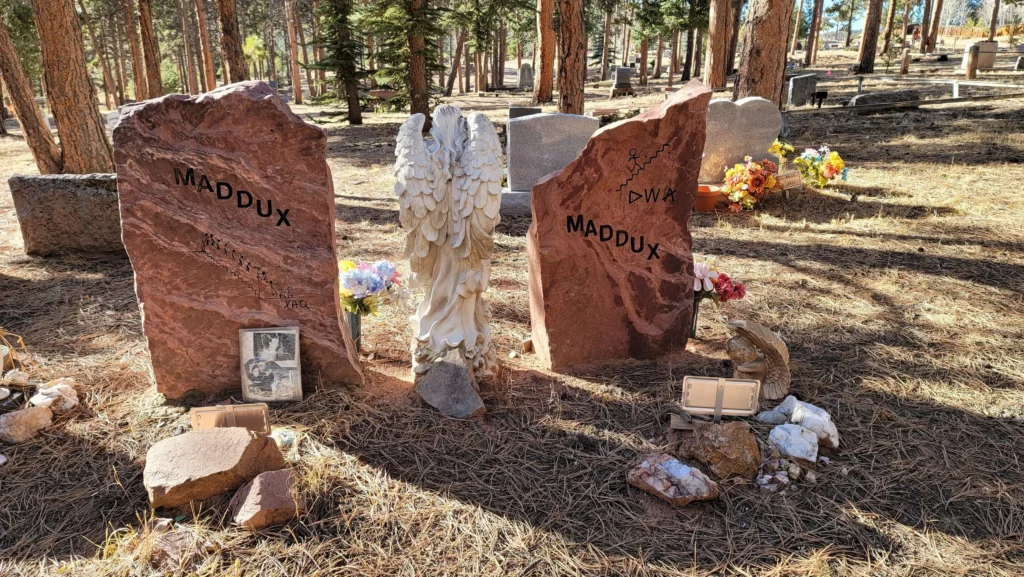
Kate Maddux captured the heartbreak in a local column: “Sometimes in life, our stories don’t have happy endings, and I’m sorry to say that this is one of those stories.” Friends and neighbors gathered at candlelight vigils, remembering Josh’s gentle nature, his music, and the kindness he showed others.
Authorities maintained the death was accidental, but the coroner admitted, “This is probably one of the more tragic ones we have to deal with.”
Joshua’s case is not the only one that leaves more questions than answers. In 1984, 17-year-old Kelly Lynn Disney walked away after an argument at a party in Newport, Oregon, and never returned. A decade later, a skull turned up in an abandoned car near Big Creek Reservoir, but no one was ever charged.

